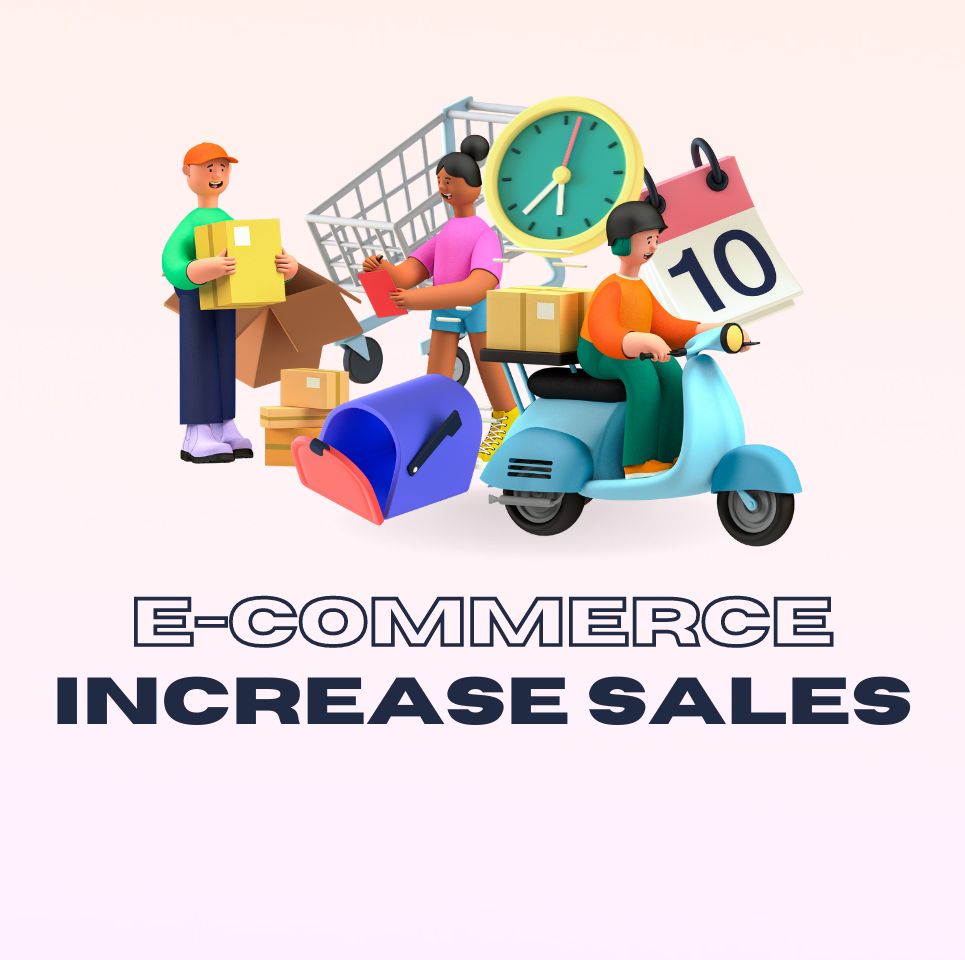Tips to Increase Sales of an E-commerce Store

Let’s face it. Establishing and running a successful e-commerce store takes more than just offering great products or creating an attractive website. To increase sales and boost revenues, strategic planning and implementation of effective techniques are absolutely vital.
In TeCuriosity’s life-changing (too much?) article, we will offer useful strategies and tips for increasing sales at your e-commerce store.
We will cover various aspects that can make a lasting difference to your store’s sales performance. By applying these tips you can enhance user experience, gain more customers, and ultimately boost revenue.
1. Establish Clear Sales Goals
Establishing Measurable Sales Targets
First and foremost, you need to set clear and measurable sales growth goals for yourself. Be it setting a specific revenue goal or increasing orders every month, setting quantifiable goals provides focus and direction to your efforts.
Establishing Key Performance Indicators (KPI)
To monitor your sales goals effectively, it’s crucial to identify key performance indicators (KPIs). These could include metrics such as conversion rate, average order value, or customer lifetime value.
You cannot shoot arrows in the dark. So, specify those KPIs!
By monitoring KPIs regularly, you can make data-driven decisions and optimize strategies accordingly.
Setting A Timeframe To Achieve Goals
Goals without deadlines are just wishes. So, create an attainable timeline for achieving your sales goals. This helps you stay motivated and take the necessary actions.
Break your goals down into smaller milestones with specific deadlines to ensure steady progress is made toward them.
2. Optimizing Product Descriptions and Images
Writing Engaging product descriptions requires considerable research. Create product descriptions that emphasize their unique features and benefits while simultaneously engaging customers, addressing customer pain points, and providing enough information for making an informed purchase decision.
Utilizing high-quality product images
Pictures speak louder than thousands of words when it comes to e-commerce. Invest in high-quality product images that show off your items at their best.
Use multiple angles, zoom features, and lifestyle images to give customers a full understanding of what they are purchasing.
Take it from us. We at TeCuriosity always purchase something online when it feels like we can evaluate its quality – just by looking at its pictures.
Integrating relevant keywords for improved search visibility
Include relevant keywords in product descriptions. Conduct keyword research to comprehend what terms your target audience is searching for.
Then, integrate these into the content you create – but be careful not to overdo it and compromise the quality and readability of your descriptions!
3. Implementing Effective Pricing Strategies
Conduct Market Research to Establish Competitive Pricing
Before setting your prices, conduct extensive market research to understand your competitors’ pricing strategies. Analyze what value you bring compared with similar products, and locate a price point that’s both competitive and profitable for your business.
Offer Discounts and Promotions to Attract Customers
All customers love a bargain, so use discounts and special promotions to excite new customers and encourage purchases. From limited-time discounts to free shipping offers or buy-one-get-one offers; incentives create urgency that spurs conversions and drives conversions.
Implementing Dynamic Pricing Strategies Based on Demand and Supply
Dynamically adjust your prices based on demand and supply to optimize profitability. For instance, during peak seasons or when stock levels are limited you could increase prices.
During slower periods you could reduce them slightly to stimulate sales. Just ensure a balance between competitiveness and profitability!
4. Enhancing User Experience and Design
Ensuring Mobile-Friendliness and Responsiveness
As smartphones continue to become the go-to technology for everyday life, having a mobile-friendly website is absolutely vital. Be sure to optimize your e-commerce store for all devices and screen sizes to provide a smooth shopping experience on all platforms.
Simplifying Navigation and Search Functionality
Make it easier for customers to locate what they’re searching for by streamlining your website’s navigation and search functionality.
Clear categories, filters, and user-friendly search bars can greatly enhance customer experiences and reduce frustration levels.
Optimizing Page Loading Speeds
No one enjoys waiting, especially when shopping online. Optimize your website’s loading speed for optimal customer experience.
Compress images, minimize code, and use caching techniques to reduce load times and keep customers engaged!
5. Integrating Social Media and Digital Marketing Strategies
Engaging Content Creation for Social Media Platforms
Engaging your audience on social media is of utmost importance in today’s fast-moving digital environment.
Post eye-catching visuals and compelling captions that encourage people to click, like, and share content from you. Be entertaining while showing your unique brand personality.
No one likes a boring brand!
Target Your Marketing Messages Toward Potential Customers
Do not waste your marketing budget on ads that reach everyone but fail to resonate. Instead, identify your target audience and tailor ads specifically to their interests, demographics, and behaviors.
Be strategic about placing them and make sure that your message gets heard loud and clear!
Influencer Marketing to Expand Brand Reach
If you want to reach a wider audience, leverage the influencers. Partner with popular influencers that align with your brand values and have true relationships with their followers. Their endorsement can give your products added credibility while drawing in new customers.
6. Simplifying the Checkout Process
Implementing an Intuitive Shopping Cart
Make sure your customers don’t experience frustration during their checkout experience by optimizing your shopping cart to be user-friendly and intuitive.
Give clear instructions, minimize steps, and allow customers to update quantities or remove items easily. Any unnecessary complexity could cause abandonment of the cart.
Offering Multiple Payment Options
Take into consideration your customers’ varied payment preferences when providing payment options to customers.
Offering everything from credit cards to digital wallets will increase the likelihood that customers complete their purchases successfully. The more convenient payment processes become, the greater will be customer conversion.
Simplifying Checkout Steps to Decrease Cart Abandonment
Long and complex checkout processes are a turnoff to customers. So, make the process as streamlined and painless as possible by only gathering essential data and filling out forms quickly.
Furthermore, consider providing guest checkout options so they don’t need to create accounts if that’s their preference.
Implement Customer Feedback and Reviews
Encourage Customers to Provide Feedback
Exploit the power of social proof by encouraging customers to leave reviews and ratings. Offer incentives, like discounts or freebies, as a means of motivating customers. Positive reviews can persuade hesitant shoppers, while negative feedback offers opportunities for improvement.
Respond Promptly to Customer Feedback and Resolve Issues Quickly
When customers take the time to provide feedback or raise concerns, be prompt in your responses and professional. Address any issues or complaints directly while offering solutions. By showing your commitment to customer satisfaction you build trust and increase loyalty.
Display Customer Testimonials to Build Trust and Establish Credibility
Show some love! Showcase customer testimonials on your online store and social media platforms. People tend to trust peer opinions over advertising pitches. Genuine customer success stories create trust with potential buyers that leads them to purchase your services or products.
The Bottom Line
An effective e-commerce store takes more than just having great products to stand out from the competition and increase sales.
Effective strategies that resonate with target customers must also be in place. Achieving success in an e-commerce business takes hard work, but with consistent effort, you can achieve sales goals and drive sustainable growth.
So, go on! Take action now, implement these tips, and watch as your store thrives in an increasingly competitive online market!
Geek out with TeCuriosity! Don’t miss out on the latest tech wonders. Subscribe for a front-row seat to the fascinating world of innovation! We promise: No spam in your inbox.












